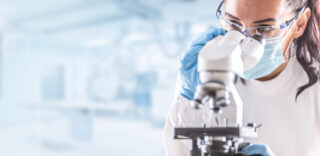The Importance of Implementing Quality Management System in Laboratories
March 10, 2022

Quality in Laboratories is as important as in any other organization and even more. It can be defined as the accuracy, reliability, and timeliness of reported test results. Quality management systems in laboratories assure the reliability of all aspects of the operations. Poor quality management can result in unnecessary treatment or treatment complications, failure to provide correct treatment, delayed diagnosis, and unnecessary follow-up diagnostic testing.
And as a result of poor-quality management follows an increase in cost, time, and work in addition to poor patient outcomes.
Therefore, QMS in medical laboratories requires quality in all practices including environment, quality procedures, record keeping, human resources, reagents, and equipment and instruments.
You should know that the quality management system in a laboratory is different from an electronic quality management system (eQMS). In a laboratory environment, an eQMS can assist a QMS in record keeping, CAPA management, document control, and more.
ISO Standards
Laboratory QMS is applicable to two ISO standards:
– ISO 15189 Medical Laboratories – Quality and Competence
This standard guides the development of the laboratory’s quality management system, technical solutions, and administrative sections that are the main factor for a laboratory’s functioning.
– ISO 17025 Testing and Calibration Laboratories
It is developed for laboratories that perform calibration and testing. It enables the calibration performing laboratory to prove accuracy in results. This helps increase customer trust around the world, harmony among all laboratories, and eliminates the need for further testing.
Quality control & quality assurance
Quality control is defined by ISO as part of the quality management requirements mandatory to fulfill accreditation. Some accrediting organizations use the information in ISO 15189 to guide the inspection and accreditation process. The ISO standard provides guidance on implementing regulatory requirements.
Quality assurance is the part of quality management focused on providing confidence that the quality requirements will be fulfilled. The implementation of a quality management system is an effective way to ensure QC and QA goals are met and maintained in the laboratory.
The 12 essentials of laboratory quality management systems
The quality system essentials are the building blocks of a quality management system. All 12 essentials must be included in the QMS to assure accurate, reliable, and timely laboratory results. The 12 QSEs must be implemented in the order that is most effective for each laboratory.
Implementing a QMS does not guarantee an error-free laboratory, but it can help maintain a high-quality laboratory that detects errors and prevents them from recurring.
– Organization
The management must support the laboratory QMS and establish ways to highlight its importance to the staff.
Key organizational components defined under this quality principle are:
– Leadership: The commitment of leaders in the implementation process through team building and motivational and communication skills
– Structure: The structure of the organization must be clearly defined by an organizational chart
– Planning: A plan should be set for skill development
– Implementation: Management should address any issue in implementing LQMS
– Monitoring: Monitoring systems assure LQMS design according to standards. It is also necessary for continuous improvement.
– Personnel
They are the ones implementing and following QMS in a laboratory. It is the laboratory director’s responsibility to develop correct job descriptions and hire adequate staff. He should also be responsible for their continuing education and should update them with the latest technologies and trends.
Employees must go through a performance appraisal, which will include a detailed evaluation such as adherence to policies, observance of safety rules, communication skills, punctuality, and behaviors.- Equipment
It is important to have properly functioning equipment because it will increase performance, confidence, and reliability in the results. It also lowers repair costs and increases service life.
Efficient equipment management can be achieved by: installation, calibration, maintenance, troubleshooting, and validation.
– Purchasing and Inventory
It describes agreements that the laboratory has with customers and outside vendors, to ensure that requirements for critical supplies and services are consistently met.
Proper purchasing and inventory principles, ensure that inventory is available when required and that operations are efficient and cost-effective.
– Process Control
It describes processes, directly and indirectly, related to the laboratory’s path of workflow, to meet requirements and maintain efficient use of resources.
One of the processes critical to laboratory performance is sample management. As soon as the sample is collected it must be well stored following the recommended conditions to prevent damage.
– Information Management
Provides guidance for managing the information generated and entered into laboratory record-keeping systems, such as patient demographics, examination results, and reports and interpretations.
– Documents and records
Any required information must be available and accessible when needed. They must be updated, and standardized forms and formats must be used for recording information.
– Occurrence Management
When occurrences are found, they must be investigated for the root cause. This prevents recurrence in the future. After occurrences are detected, they can be rectified by taking appropriate Corrective and Preventive Actions (CAPAs).
– Assessment
Assessment is an integral quality principle that evaluates all the functions of an LQMS and demonstrates that it is meeting regulatory and customer requirements. ISO uses audits instead of assessments.
– Process Improvement
According to ISO 15189, a continual improvement process should: identify weaknesses, develop an improvement plan, implement it, review its effectiveness, and adjust.
– Customer service
Laboratories have many customers (patients, physicians, public health agencies), and the laboratory head is responsible for ensuring and measuring the degree of customer satisfaction. Different mediums can be used to measure satisfaction, such as surveys, indicators, and audits.
– Facilities and Safety
Laboratory Safety and quality are the responsibility of the laboratory head. He/she must actively participate in lab designing, assess all potential risks, and provide feedback on developing a safe laboratory.
If you are interested in QMS for laboratories, you can contact one of Intellect’s experts or request a demo.